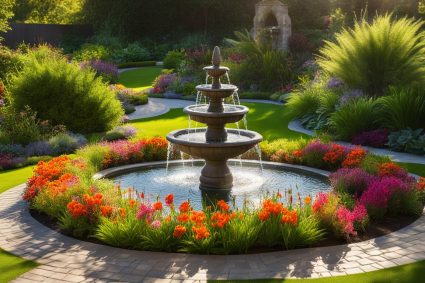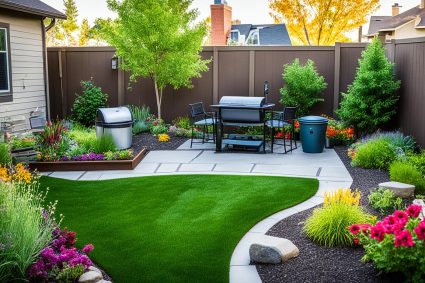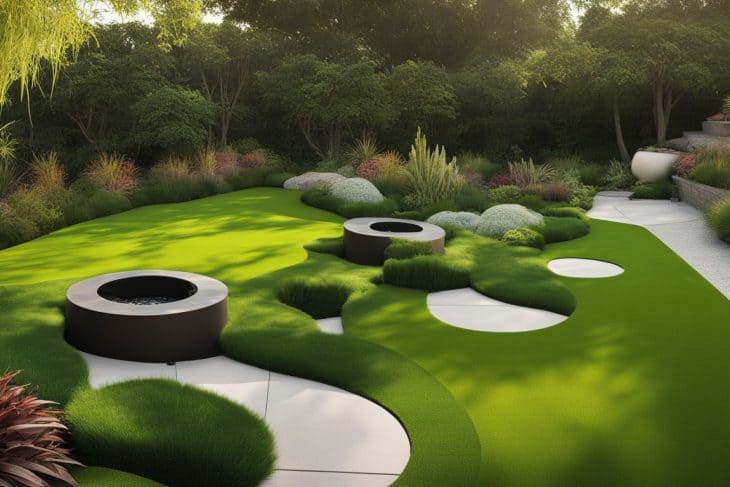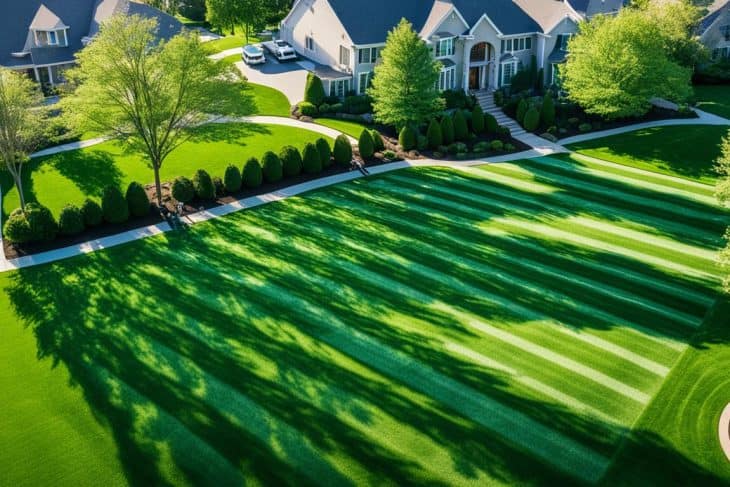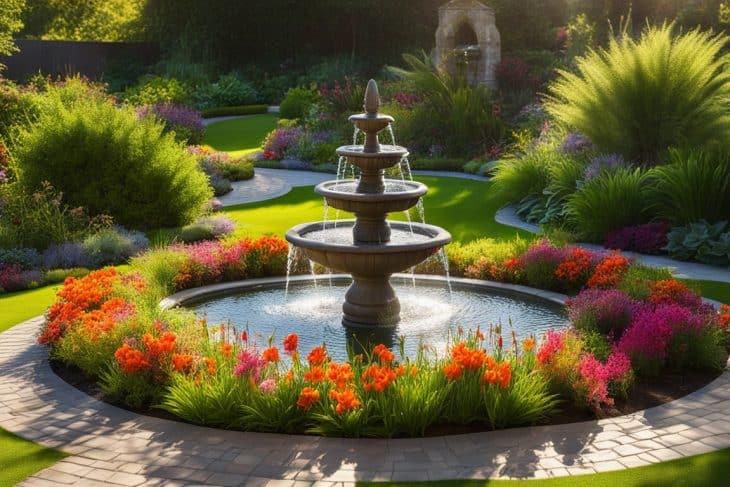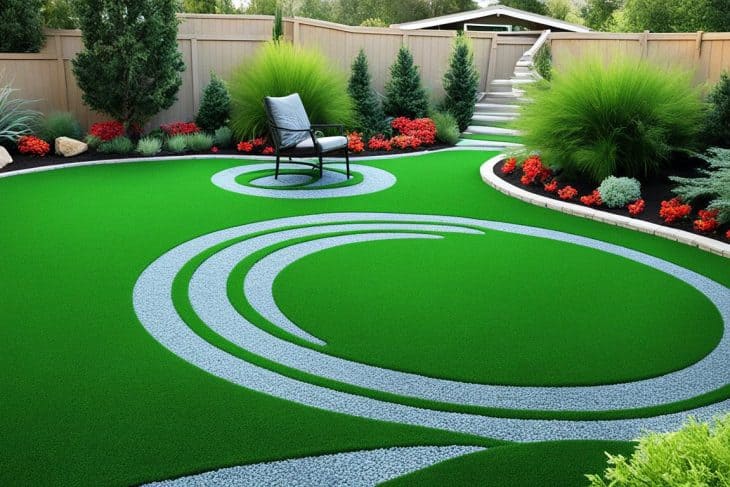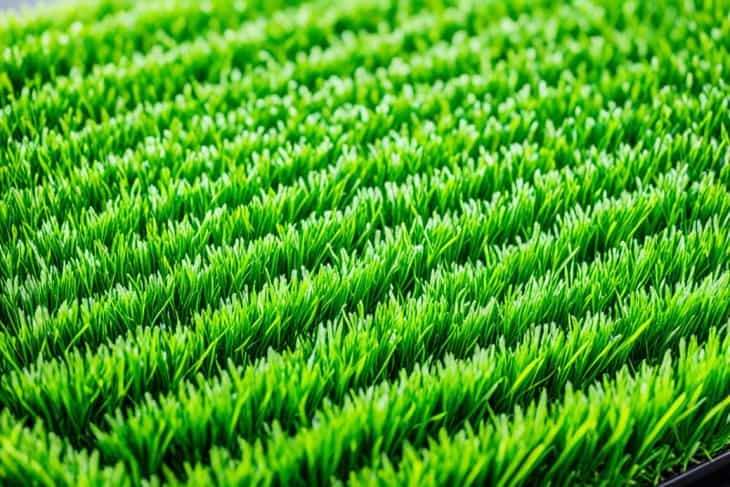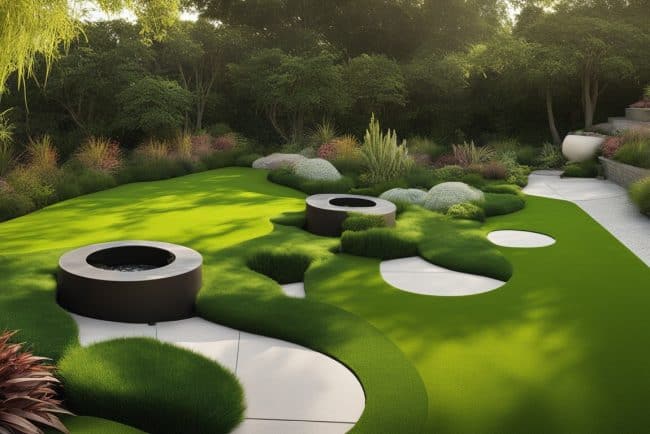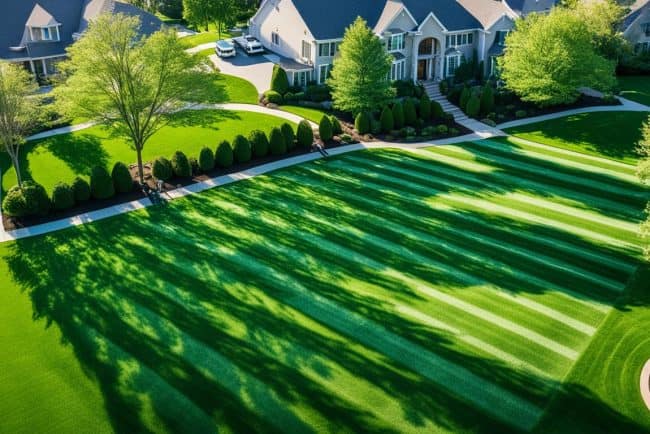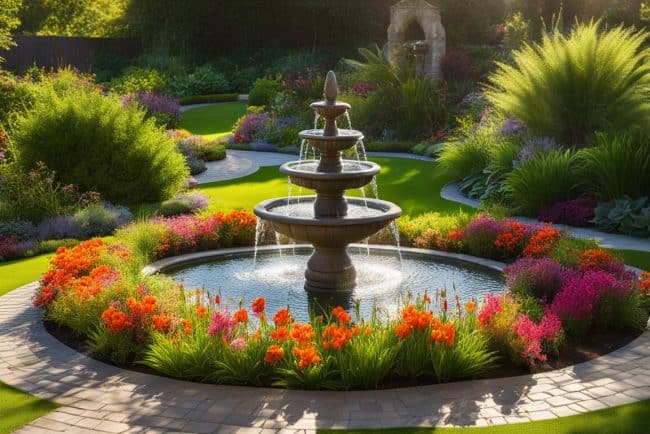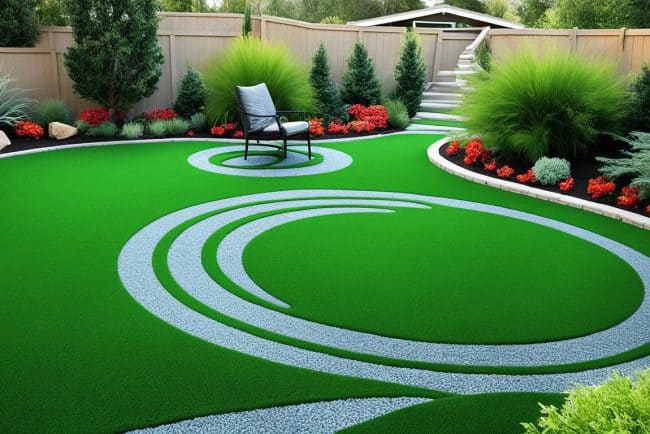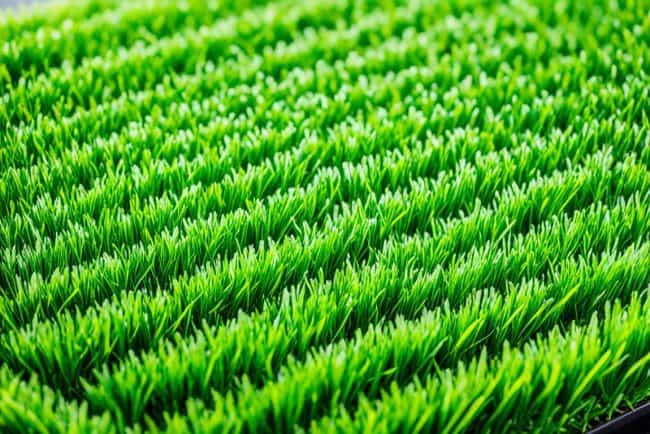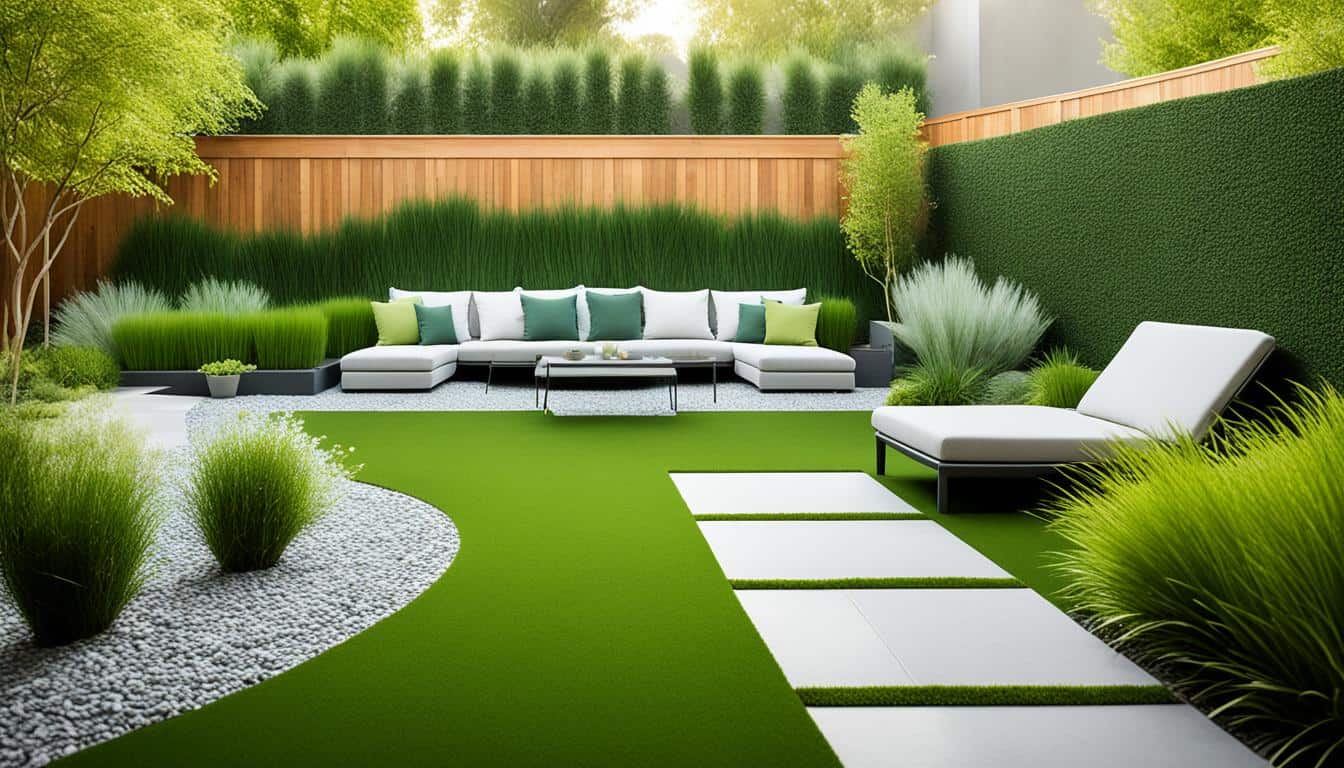
Did you know that San Diego families can save up to 50% more water? They do this by using xeriscaping with plants that don’t need much water. This fact shows more people are choosing eco-friendly gardens, especially where water is scarce. In my own yard, I’m looking at ways to be kinder to our planet.
Things like artificial grass can make your yard look great and save water. It can also cut down on how much you spend taking care of your yard. Using good synthetic turf can make your garden lively and eco-friendly. This means your outdoor area helps the local environment and can also increase your home’s value. Let’s discover how to use eco-friendly artificial grass in our yard designs together.
Key Takeaways
- Artificial grass conserves water and reduces maintenance.
- It enhances property aesthetics while being environmentally friendly.
- High-quality synthetic turf is ideal for regions prone to drought.
- Combining artificial turf with live plants creates a beautiful landscape.
- Sustainable landscaping practices can significantly save on costs and resources.
Understanding Eco-Friendly Artificial Grass
Eco-friendly artificial grass is a big step forward in green landscaping. It looks and feels like real grass but is made from safe, synthetic materials. These include polyethylene strands mixed with sand and rubber grains. This mix makes sure the turf is kind to the planet.
One big benefit is how little water it needs. Real lawns need a lot of watering, but not this artificial grass. It’s perfect for those who care about saving water. Plus, it hardly needs any upkeep. You won’t have to mow, fertilize, or use harsh chemicals, which keeps the air clean and safe for everyone.
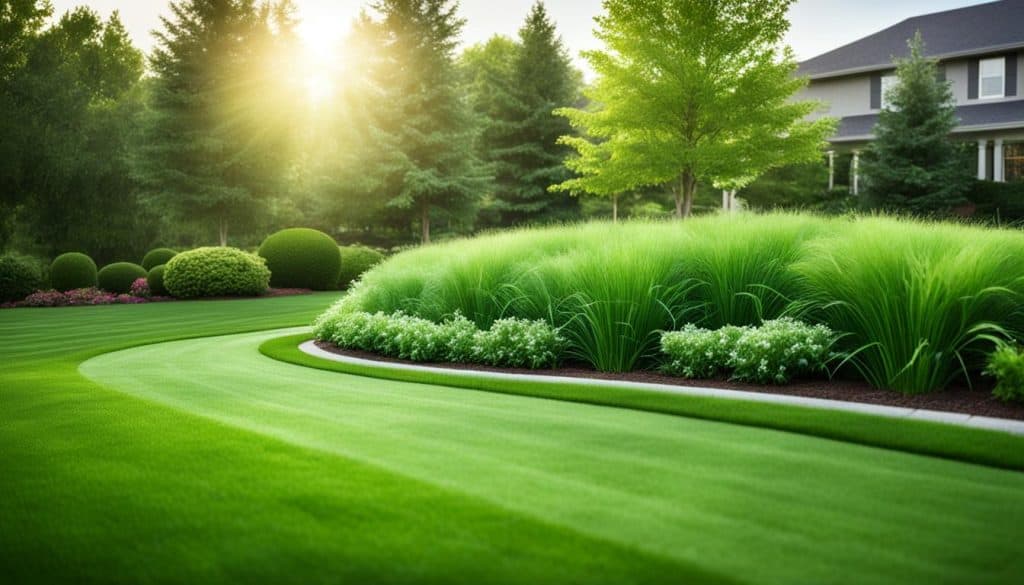
This type of grass is also very tough and long-lasting. It can handle lots of foot traffic without getting damaged. To keep it looking good, all you need to do is rinse it now and then. Making it also means less pollution, which is better for our planet.
It’s also good for the earth in other ways. It doesn’t need pesticides that can hurt wildlife. The way it’s built helps rainwater drain well, which is important in cities. So, it’s not just practical; it also helps nature. More and more people are choosing it for their gardens and public spaces.
Benefits of Artificial Turf for Green Yard Design
Choosing artificial turf brings many benefits of artificial turf for green yards. It helps save water, which is great for dry areas. Instead of watering the grass, you can save thousands of gallons of water every year. This is good for the environment and your wallet.
Artificial turf means less work in the garden. You won’t have to cut, feed, or weed the grass. This leaves you more time to enjoy your yard. Plus, artificial turf is tough. It can take a lot of use without getting damaged, making it perfect for families with kids or pets.
Artificial turf is a smart choice for saving money in the long run. The upfront cost might be between $5 to $20 per square foot. But, you’ll save on the costs of keeping up real grass. A good artificial turf can last over ten years and make your property look great.
| Feature | Artificial Turf | Natural Grass |
|---|---|---|
| Water Requirements | No watering needed | Requires regular watering |
| Maintenance | Low maintenance | High maintenance (mowing, fertilizing) |
| Lifetime | 10-20 years | Varies (depends on care) |
| Cost Savings | Reduces water bills and maintenance costs | Potentially higher long-term costs |
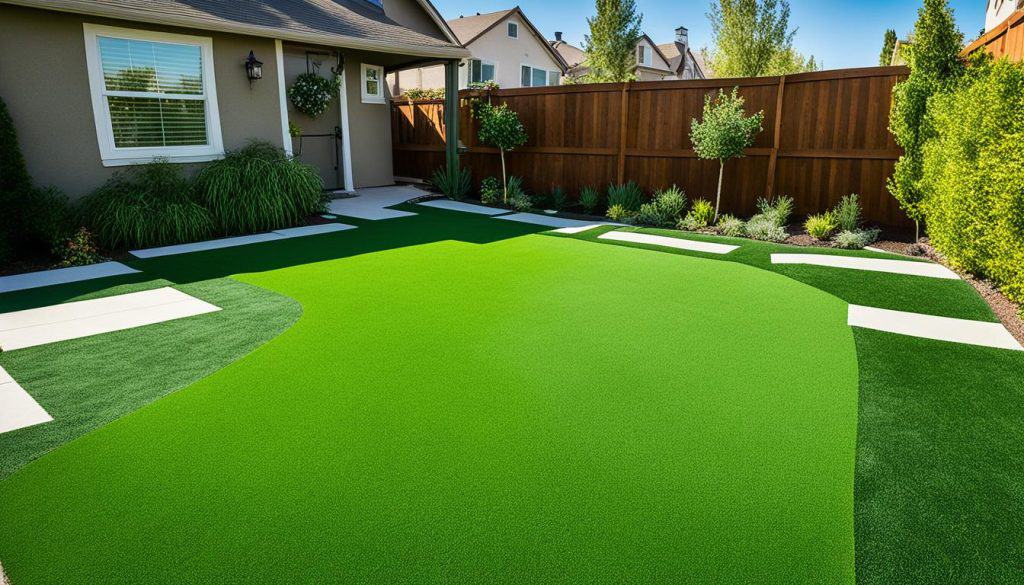
Green Yard Design: Incorporating Sustainable Turf
Adding sustainable turf to my yard makes it look better and supports eco-friendly living. This choice includes low maintenance options, which are great for cities needing to save water.
Low Maintenance and Water Conservation
Water-saving landscaping is where artificial grass shines. It’s perfect for urban areas, like California, where water is precious. Choosing synthetic grass means I don’t have to mow, water, or fertilize often. My yard looks good all the time without much effort, saving lots of water.
Durability and Longevity of Synthetic Grass
Synthetic grass lasts long and fights off weather damage. With the right care, it can last over 20 years, making it a smart choice for the environment. This type of grass keeps looking good, year-round, without needing to be replaced often. It’s great for keeping my outdoor space nice without hurting nature.
Cost-Effectiveness Over Time
The money spent on synthetic grass often comes back over the years. I save about 20% on upkeep, so I can use that money for other things. I don’t have to buy expensive fertilizers or water it a lot. By choosing synthetic grass, I help the planet while taking care of my green area.
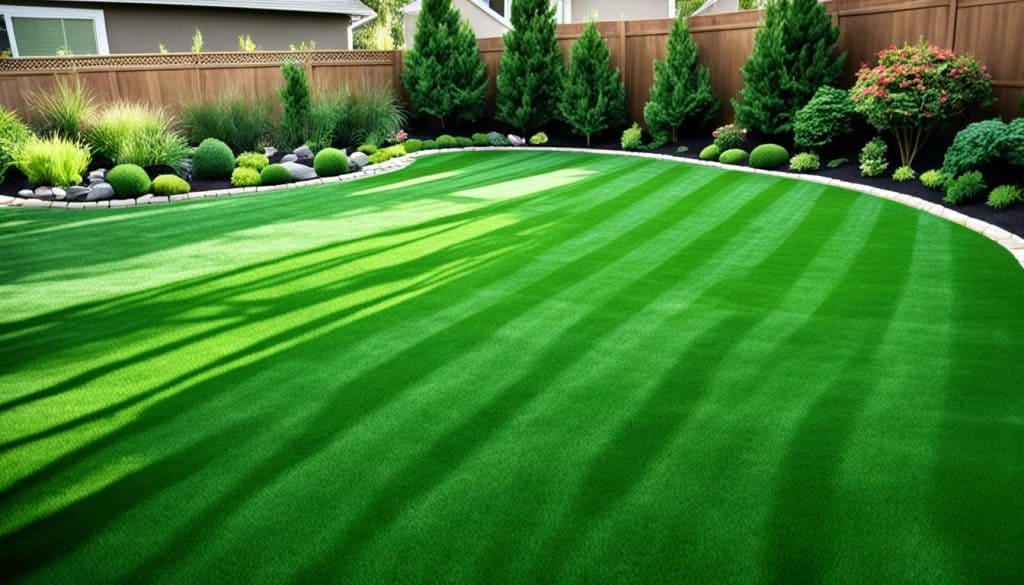
Choosing the Right Artificial Grass
In my search for the perfect eco-friendly turf, I discovered that choosing wisely is key. The materials range from recycled plastics to natural fibers, helping lower our ecological impact. Polyethylene yarn is top-notch because of its flexibility, perfect for various uses.
Materials Used in Eco-Friendly Turf
A high stitch count means the artificial grass is both high quality and durable. It looks just like a natural lawn. Thatch adds to this realistic look by varying the fiber heights.
The face weight, usually between 30 and 90 ounces per square yard, also matters a lot. It’s a big factor in the turf’s durability and guided my choice.
Understanding Infill Options
It’s vital to know about the different infill types for artificial grass. Silica sand and crumb rubber keep the blades upright and boost the feel and look of the turf. For those with pets, materials like zeolite can fight odors and aid in drainage. With careful material choice, I can make sure my green space works well and stays sustainable.
